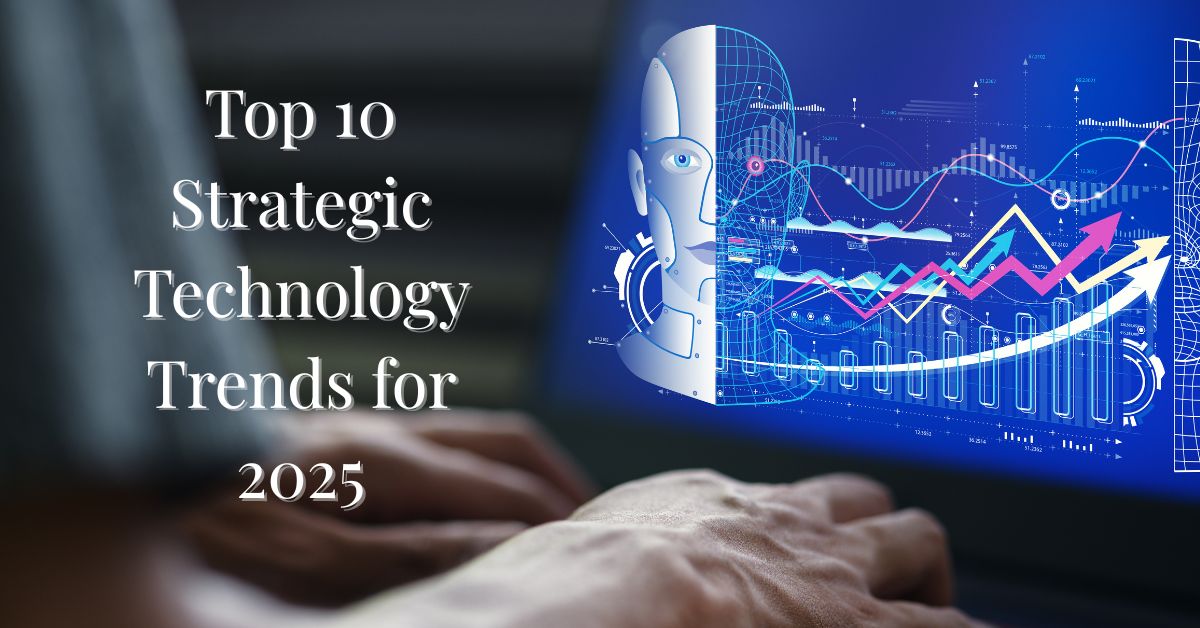How AI, automation, and smarter systems are shaping the next decade Technology in 2025 is evolving faster than we imagined. Tools are becoming smarter, workflows more automated, and devices deeply connected. Businesses are shifting to AI-driven systems. Consumers are expecting faster, simpler, and more personalized digital experiences.
This guide breaks down the Top 10 Technology Trends of 2025 in a way anyone can understand — with examples, expert insights, and real impact on daily life.
Table of Contents
Quick Overview of 2025 Tech Trends
| Trend | What It Means | Why It Matters |
|---|---|---|
| AI Everywhere | Every app will include AI features | Makes digital tasks easier + faster |
| Personal AI Assistants | Smarter, conversational assistants | Saves time, improves productivity |
| Hyper-Automation | Automating end-to-end business workflows | Removes repetitive work |
| Zero-Trust Cybersecurity | Advanced security checks everywhere | Protects data in AI-driven world |
| AI Search | Natural-language based search | More accurate, human-like results |
| Smart Homes | Connected device ecosystems | Convenience + automation |
| Sustainable Tech | Energy-efficient and green solutions | Lower carbon footprint |
| Digital Twins | Virtual models of real systems | Test ideas without risk |
| Mixed Reality | AR/VR in daily use | Better learning & work experiences |
| Digital Ecosystems | Interconnected apps & devices | Smoother user experience |
1. AI Everywhere in Daily Tools
AI will be part of almost every app in 2025. Instead of being a separate tool, AI becomes built-in. From writing and editing to searching and predicting your next action, everyday apps will quietly use AI to guide decisions.
This shift also matches the direction of modern devices, similar to the products highlighted in Top 5 Upcoming Gadgets Launching in 2025, where AI integration is a major focus.
2. Personal AI Assistants
AI won’t just answer questions. It will help manage emails, documents, meetings, tasks, and even organize files automatically. These assistants will be more conversational and more capable, acting like digital companions that simplify work routines.
3. Hyper-Automation in Business
Companies are moving toward tools that automate entire workflows, not just small steps. This includes:
- Automated customer responses
- AI-supported decision-making
- End-to-end software workflows
- Predictive maintenance for industries
Businesses want faster results and fewer repetitive tasks, and hyper-automation becomes a key way to achieve this.
4. Advanced Cybersecurity and Zero-Trust Systems
As AI grows, cyber threats grow too. That’s why companies are shifting toward zero-trust models where every access point must be verified. Threat detection systems are becoming more responsive and more adaptive, using real-time learning to catch unusual patterns quickly.
5. AI-Driven Search and Discovery
Search engines, website searches, and app searches are becoming conversational. Instead of typing fixed keywords, people can ask natural questions and get meaningful answers. This trend makes technology feel more human and more intuitive.
This direction is similar to how apps like Telegram and YouTube are improving user experience through smarter updates, as seen in articles like the Telegram Update 2025 guide.
6. Smarter Devices and Connected Homes
Smartphones, watches, TVs, home cameras, and kitchen appliances will continue to blend together under one ecosystem. Devices will talk to each other and share information to make everyday routines simpler. Home automation will feel less like a luxury and more like a standard feature.
7. Sustainable Tech and Energy-Efficient Systems
Tech companies are shifting toward green solutions — smaller chips, energy-saving processors, recyclable materials, and eco-friendly production. Efficient cloud computing and low-energy hardware will play a major role in 2025 consumer trends.
8. Workplace Digital Twins
Digital twins create a virtual copy of a real system, allowing companies to test ideas without taking risks in real life. Industries are using this for:
- Construction
- Manufacturing
- Training
- Medical simulation
It helps teams experiment safely and make smarter decisions.
9. Growth of Mixed Reality Experiences
AR and VR tools will expand into education, training, shopping, entertainment, and remote work. Headsets will become lighter, cheaper, and easier to use. Virtual try-ons, digital classrooms, and immersive meetings will be more common.
If you follow tech closely, you’ve already seen hints of this in the rise of 2025 gadgets covered in the gadgets article mentioned earlier.
10. Platform-Based Ecosystems
Technology companies are moving away from single apps. Instead, they offer full ecosystems where apps, AI tools, cloud services, and devices work together. These ecosystem models create smoother user experiences and allow businesses to scale faster.
Why These Trends Matter for 2025
The top 10 strategic technology trends for 2025 show one thing clearly:
technology is moving toward simplicity, intelligence, and seamless user experience. Whether someone works in a small business, large organization, or as an independent creator, these trends will influence how tools are used every day.
This year is shaping up to be a turning point, where AI and automation blend into everyday life without making things complicated. These developments make devices smarter, apps smoother, and workplaces more efficient.
